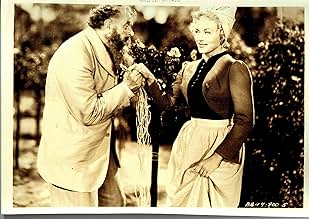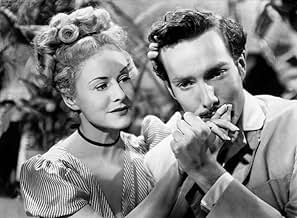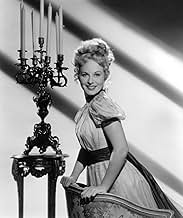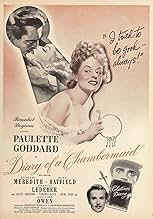IMDb RATING
6.5/10
1.6K
YOUR RATING
A chambermaid plots to climb the social ladder by marrying a wealthy man.A chambermaid plots to climb the social ladder by marrying a wealthy man.A chambermaid plots to climb the social ladder by marrying a wealthy man.
- Awards
- 1 win total
Edward Astran
- Townsman
- (uncredited)
Arthur Berkeley
- Townsman
- (uncredited)
Chet Brandenburg
- Townsman
- (uncredited)
Egon Brecher
- The Postman
- (uncredited)
Jane Crowley
- Townswoman
- (uncredited)
Sumner Getchell
- Pierre
- (uncredited)
Jack Perry
- Townsman
- (uncredited)
Joe Ploski
- Townsman
- (uncredited)
Storyline
Did you know
- TriviaWhile wrongly billed as Renoir's last American film (there were several later films of note, including The Woman on the Beach), this pleasant film is a far cry from his early masterpieces - like Rules of The Game, The Grand illusion and The Crime of M. Lang. It's primarily notable for the small things it reveals after close examination. Paulette Goddard, in her mid-30s at the time, still manages to show the smiling presence and nuanced emotions that so charmed Charlie Chaplin; at one point, stumbling while she tries to balance a tray with a cake on it, she makes moves that are pure Chaplin. The cast is a study in the history of filmmaking: Dame Judith Anderson, whose credits range from Rebecca to Star Trek III (and once toured with a theater company performing the lead role in Hamlet); Irene Ryan would achieve fame decades later as one of the stars of The Beverly Hillbillies; and Burgess Meredith - who co-produced and co-wrote - played in hundreds of films and television productions, from the original 1939 Of Mice and Men through Rocky I, II, III, and V.
- GoofsWhen the Captain (Meredith) is going to the July 14 celebration, the shadow of the boom and mic are visible.
- Quotes
Georges Lanlaire: I never found the urge to live or die on a big scale.
- ConnectionsReferenced in Tiovivo c. 1950 (2004)
Featured review
The Diary of a Chambermaid is a transitional film in the development of Renoir's lesser known stylistic system. Braudy would later distinguish Renoir's two systems as being tied to theater and realism respectively (although there have been compelling arguments about these categories being either reductive or simply misnomers). Goddard is the focus of the story (much in the same way Renoir later uses Magnani, Arnoul and Bergman). The camera tracks her action, her closeups are one-shot, there are alternating shot scales in single scenes to emphasize her character's psychological reaction to events, studio exteriors help idealize the framing of her screen personality and high/low angle shots purvey her psychological perspective on group dynamics. Celestine (Goddard) has an ambiguity to her motivation that heightens psychological identification. It is unclear as to whether she sees the world divided into classes or sexes, or both. The ending is a happy one, and the politics is further subverted through jovial and emotionally-charged highly-individualized characters. Non-diegetic soundtrack is employed to increase distinctions in the emotional responses of different characters. Depth of field is at the service of Celestine's staging while obstructions in the mise-en-scene become incorporated into the plot. In this respect, the camera is not an unobtrusive one. There is an inconsistency in the use of stylistics, where on one hand reframing pans are fully at the service of psychological identification and privilege of the transcendental subject position while the long take mobile framing of the July 14th celebration reminisce on M.Lange, Illusion and Regle. Diary is a melodrama with comedic elements to take the edges off, but when the master of the house reads in the morning paper "another woman murdered in Paris, another woman cut to pieces" there is no doubt that Renoir is infusing a consideration for the plight of women in a misogynist society. This was very important to him and perhaps the dark undertones of this film have something to say about the repression he experienced working in Hollywood for the war. How Burgess Meredith factors into all that remains to be seen.
- LobotomousMonk
- Mar 9, 2013
- Permalink
- How long is The Diary of a Chambermaid?Powered by Alexa
Details
- Release date
- Country of origin
- Language
- Also known as
- Dnevnik jedne sobarice
- Production companies
- See more company credits at IMDbPro
- Runtime1 hour 26 minutes
- Color
- Aspect ratio
- 1.37 : 1
Contribute to this page
Suggest an edit or add missing content

Top Gap
By what name was The Diary of a Chambermaid (1946) officially released in India in English?
Answer




















